Designing Beautiful Backyard Flower Beds
Creating a stunning flower bed in your backyard is like painting a masterpiece on a blank canvas. Imagine stepping outside and being greeted by a burst of colors, fragrant blooms, and the gentle buzz of bees. It’s not just about planting flowers; it’s about designing a vibrant space that reflects your personality and enhances your outdoor living experience. Whether you have a sprawling garden or a cozy nook, the right flower bed can transform your backyard into a picturesque retreat.
Before diving into the world of flowers, it’s essential to consider a few key factors that will guide your design. First, think about the climate in your area. Are you in a region that enjoys warm summers and mild winters, or do you face harsh conditions? Understanding your local climate will help you select flowers that not only survive but thrive. Next, take a look at your soil type. Is it sandy, clayey, or loamy? Each type has its unique characteristics and will influence the types of plants you can grow. Lastly, consider the sunlight your flower bed will receive. Some flowers adore the sun, while others prefer a bit of shade. Knowing these factors will set you up for success as you embark on your flower bed journey.
Now that you have a grasp on the basics, let’s talk about the fun part—choosing the right flowers! You want to select varieties that not only complement each other but also create a dynamic visual impact. Think of your flower bed as a stage where each flower plays a role in the overall performance. Mixing different shapes, sizes, and textures can create a captivating display. For instance, pairing tall sunflowers with delicate pansies can add both height and softness to your design.
Additionally, don’t forget about the seasons! A well-designed flower bed should have something blooming at all times of the year. Incorporating perennials that return each year alongside annuals that provide seasonal color can keep your garden lively and engaging. You might even consider adding some evergreen plants for year-round greenery. The key is to think ahead and plan for a continuous bloom cycle that will keep your flower bed looking fresh and inviting.
In conclusion, designing beautiful backyard flower beds is an art that combines creativity, knowledge, and a bit of patience. By selecting the right flowers, understanding your environment, and planning for seasonal changes, you can create a stunning floral display that not only beautifies your outdoor space but also brings joy to your everyday life. So grab your gardening gloves, unleash your creativity, and let your backyard blossom into a vibrant sanctuary!
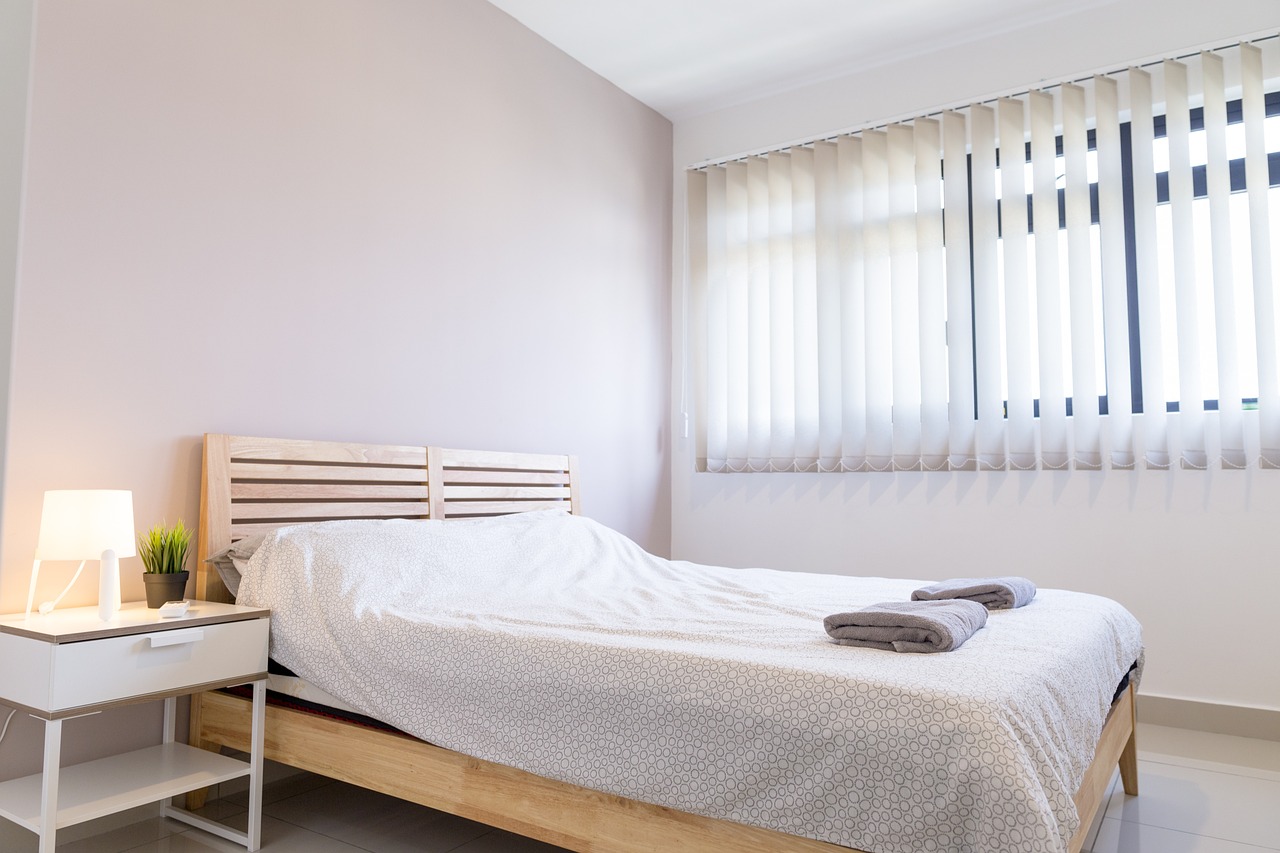
Choosing the Right Flowers
When it comes to designing a stunning flower bed, is like picking the perfect ingredients for a delicious recipe. You wouldn’t throw just anything into a pot and expect a gourmet meal, right? Similarly, the flowers you select should be tailored to your specific garden conditions, ensuring they not only survive but thrive!
First off, consider your climate. Are you in a region that basks in sunshine, or do you find yourself frequently dodging rain? Different flowers have varying needs when it comes to sunlight, so it’s essential to match your selections with the amount of sun your flower bed receives. For example, if your backyard is drenched in sunlight, you might opt for sun-loving beauties like marigolds and zinnias. On the other hand, if you have a shady nook, consider planting hostas or ferns that thrive in low light.
Next up is soil type. Just as a cake needs the right kind of flour, your plants need the right soil to flourish. Is your soil sandy, clayey, or loamy? Each type has its quirks and characteristics. For instance, sandy soils drain quickly but may require more frequent watering, while clay soils retain moisture but can become compacted. To help you choose wisely, here’s a quick reference table:
| Soil Type | Characteristics | Best Flowers |
|---|---|---|
| Sandy | Drains quickly, low nutrient retention | Lavender, Sedum |
| Clay | Retains moisture, can become compacted | Daylilies, Astilbe |
| Loamy | Ideal balance of drainage and nutrients | Roses, Peonies |
Now, let’s not forget about sunlight and water requirements. Each flower has its own thirst level and light preference, and understanding these needs can make or break your flower bed’s success. For example, petunias love the sun and require regular watering, while pansies can tolerate some shade and prefer cooler temperatures. By grouping flowers with similar needs, you’ll create a harmonious and thriving garden.
Lastly, think about seasonality. Some flowers bloom in the spring, while others wait until summer or fall to show off their colors. By selecting a mix of annuals and perennials, you can ensure that your flower bed is bursting with life throughout the growing season. Imagine stepping into your backyard and being greeted by a riot of colors from early spring to late fall—now that’s a sight to behold!
In conclusion, choosing the right flowers for your backyard flower bed is all about understanding your garden’s unique conditions. By considering climate, soil type, sunlight, water needs, and seasonal blooms, you can create a dazzling display that will have your neighbors green with envy. So, roll up your sleeves, dig into the soil, and let your creativity blossom!

Design Principles for Flower Beds
When it comes to creating stunning flower beds, understanding design principles can make all the difference. Think of your flower bed as a canvas where you can express your creativity. Just like a painter chooses colors and shapes, you need to consider elements such as balance, contrast, and repetition to craft a visually appealing masterpiece in your backyard.
Let’s dive into these principles a bit deeper. First up is balance. This principle refers to the distribution of visual weight in your flower bed. You can achieve balance through symmetry, where both sides of the bed mirror each other, or asymmetry, which creates a more dynamic and relaxed feel. Imagine standing in front of a perfectly symmetrical flower bed—it gives off a sense of order and tranquility. On the other hand, an asymmetrical arrangement can evoke excitement and energy, much like a lively conversation among friends.
Next, we have contrast. This principle is all about making certain elements stand out. Consider pairing flowers of different heights, colors, and textures. For instance, placing tall sunflowers next to low-growing marigolds creates a stunning visual contrast that draws the eye. It’s like setting a bold statement piece against a neutral backdrop—everything pops! The key is to experiment with various combinations until you find the perfect mix that resonates with your style.
Another important principle is repetition. This involves using similar elements throughout your flower bed to create a cohesive look. You might choose to repeat a particular flower or color at intervals, which can help tie the entire design together. Think of it like a catchy chorus in a song—once you hear it, it sticks with you. This technique not only enhances the aesthetic appeal but also provides a sense of unity in your garden.
To visualize these principles better, let’s consider a simple table that illustrates how they can be applied:
| Design Principle | Application in Flower Beds |
|---|---|
| Balance | Use symmetrical arrangements for a classic look or asymmetrical for a more casual vibe. |
| Contrast | Combine flowers of different colors and heights to create visual interest. |
| Repetition | Repeat certain flowers or colors to unify the design. |
By keeping these principles in mind, you can create flower beds that not only look beautiful but also feel harmonious with their surroundings. Remember, the beauty of gardening lies in experimentation. Don’t be afraid to try new combinations and arrangements. Just like in life, sometimes the most unexpected pairings yield the most delightful results!
- What is the best time to plant flowers? Generally, spring is an ideal time for planting most flowers, but it can vary based on your climate.
- How do I choose flowers that will thrive in my area? Consider your local climate, soil type, and the amount of sunlight your garden receives when selecting flowers.
- Can I mix annuals and perennials in the same flower bed? Absolutely! Mixing annuals and perennials can create a vibrant and continuously blooming garden.
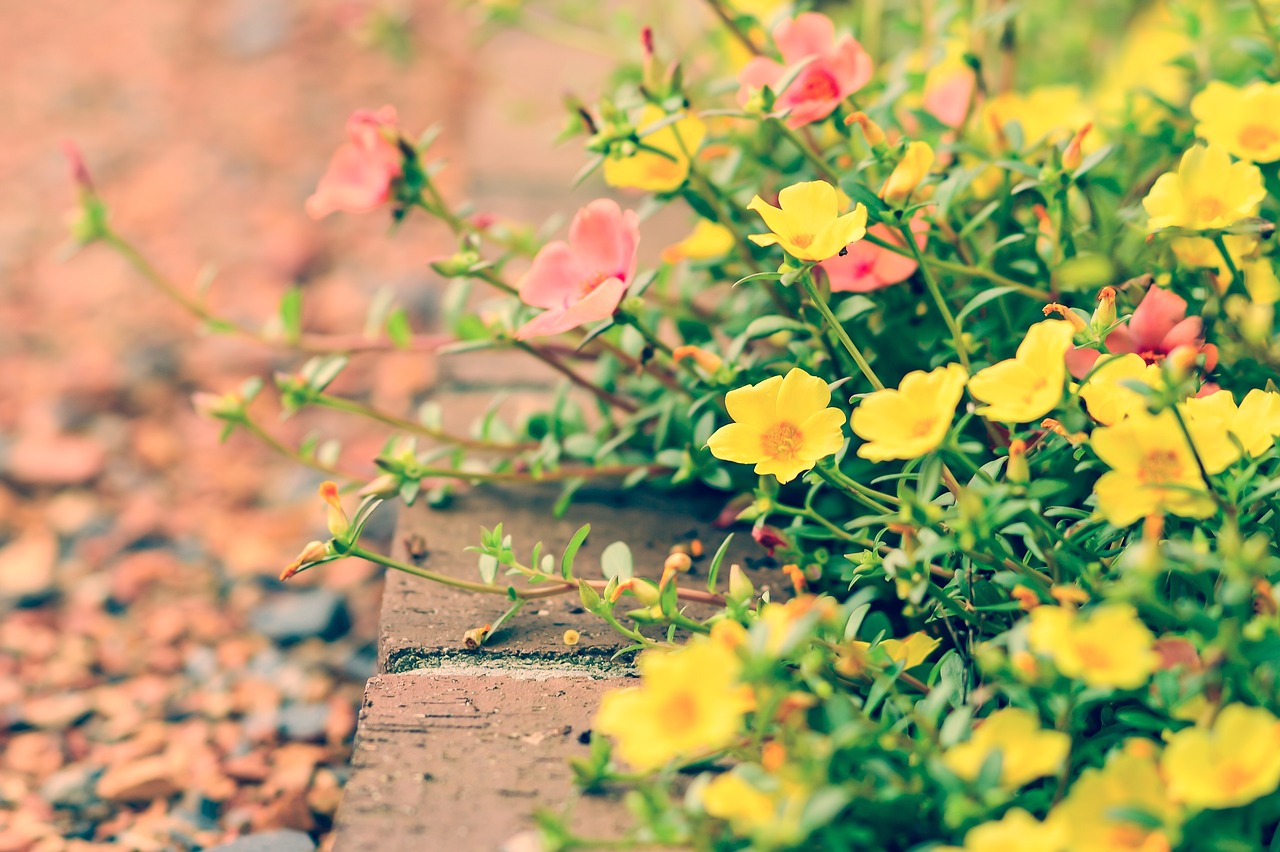
Color Theory in Flower Selection
When it comes to designing flower beds, understanding color theory can be your secret weapon. Just like an artist chooses colors to evoke emotions, you can select flowers that create stunning visual effects in your garden. Imagine walking into your backyard and feeling an instant lift in your mood just because of the colors surrounding you! Colors can influence our feelings and perceptions, making it essential to choose wisely.
To get started, think about the color wheel. This handy tool categorizes colors into primary, secondary, and tertiary hues. By understanding how these colors relate to one another, you can create beautiful arrangements that either harmonize or contrast. For instance, if you want to create a calming atmosphere, you might lean towards analogous colors—those that sit next to each other on the color wheel, like blue, blue-green, and green. These colors blend seamlessly and can make your space feel serene.
On the flip side, if you’re looking to make a bold statement, consider using complementary colors. These are colors that are opposite each other on the wheel, such as purple and yellow or red and green. They create a vibrant contrast that can really make your flower beds pop! Imagine a sunny day with bright yellow daisies standing out against deep purple irises—it's a visual feast that draws the eye and creates excitement.
But don’t stop at just choosing colors; think about the shades and tones as well. You can use varying shades of the same color for a monochromatic scheme, which can give your garden a sophisticated look. For example, planting different shades of pink—from soft blush to vibrant fuchsia—can create a cohesive and elegant appearance. It’s like painting a canvas with different strokes of the same color, resulting in a beautiful gradient effect.
As you plan your flower bed, consider how the colors will interact with one another and with the surrounding landscape. Think about the time of day and how sunlight will affect the appearance of the flowers. Some colors may look more vibrant in the morning light, while others may shine during the golden hour of sunset. This interaction can transform your garden into a dynamic space that changes with the light, adding another layer of interest.
Finally, don’t forget about the seasonal changes. Different flowers bloom at various times of the year, so planning for a succession of colors can keep your garden looking fresh and vibrant throughout the seasons. For instance, early spring bulbs like tulips can be followed by summer perennials such as coneflowers, ensuring that your flower beds are never dull.
In summary, color theory is not just an abstract concept; it’s a practical tool that can help you create stunning flower beds that reflect your personality and enhance your outdoor space. By understanding how colors work together, you can create a garden that is not only beautiful but also a source of joy and inspiration for you and your visitors.
- What are the best color combinations for flower beds? It often depends on personal preference, but complementary colors like purple and yellow or analogous colors like blue and green can create stunning effects.
- How can I ensure my flower colors last throughout the seasons? Choose a variety of flowers that bloom at different times of the year to maintain color in your garden.
- Can I mix different types of flowers in the same bed? Absolutely! Mixing different types of flowers can create a more dynamic and interesting flower bed. Just be mindful of their growth habits and needs.
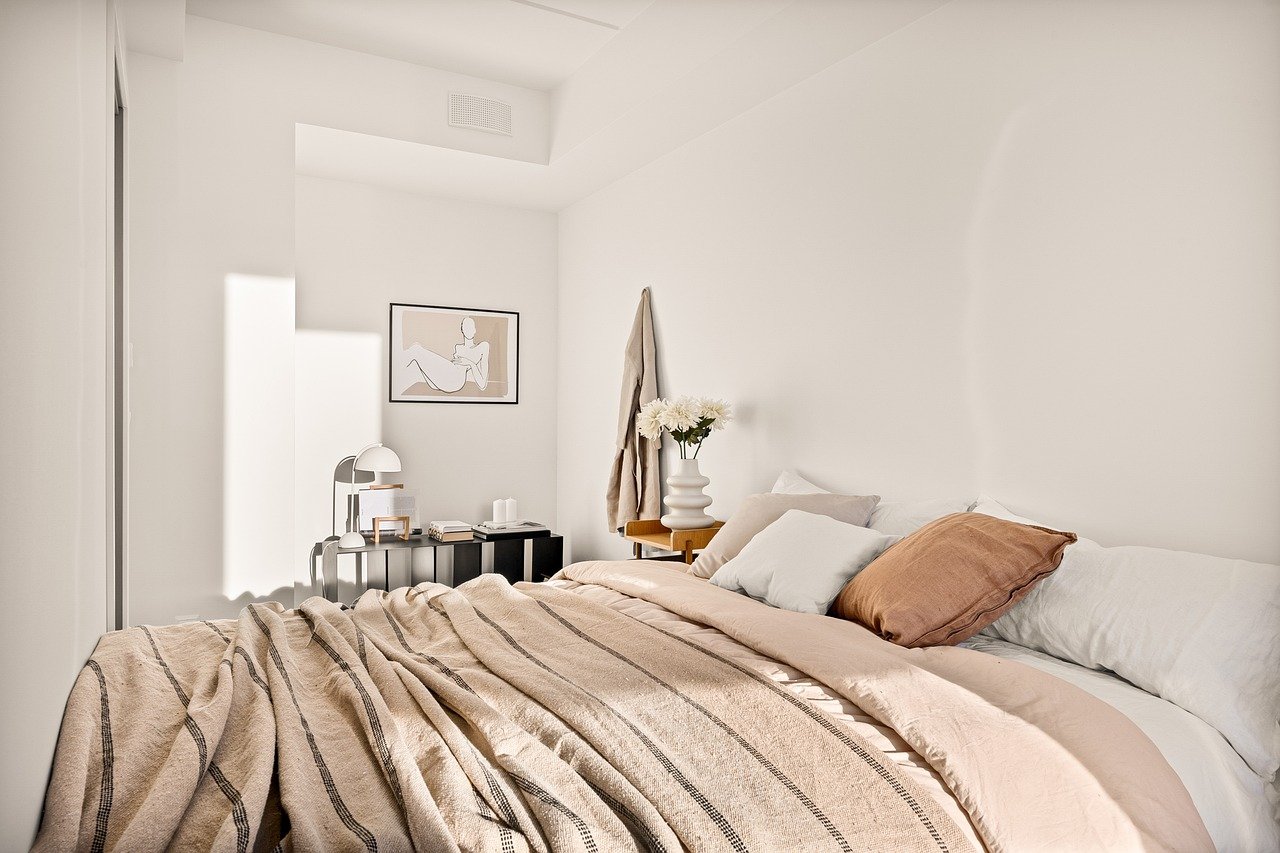
Complementary Colors
When it comes to designing your backyard flower beds, can be your secret weapon in creating a stunning visual impact. Imagine walking through a garden where the vibrant oranges of marigolds are beautifully contrasted against the deep purples of petunias. This striking combination not only draws the eye but also creates a sense of harmony and balance in your outdoor space.
Complementary colors are those that are opposite each other on the color wheel. For instance, blue and orange, red and green, or yellow and purple. By strategically placing these colors next to each other, you can enhance the vibrancy of each flower, making them appear even more alive and inviting. But how do you effectively pair these colors in your flower beds?
First, consider the overall theme of your garden. Are you aiming for a bold and energetic atmosphere, or something more subdued and tranquil? Once you have a vision in mind, you can select your flowers accordingly. For example, if you want to create a lively and energetic space, you might choose a combination of bright yellow sunflowers paired with rich purple salvia. This not only captures attention but also encourages a sense of joy and excitement.
However, it’s essential to keep in mind that balance is key. Too many contrasting colors can create a chaotic look, while too few can lead to a dull garden. Here are a few tips for achieving that perfect balance:
- Limit your palette: Choose 2-3 complementary color pairs to avoid overwhelming the space.
- Vary the heights: Use taller plants in the back and shorter ones in the front to create depth.
- Incorporate foliage: Don’t forget about green leaves! They can help break up the colors and provide a restful backdrop.
Another effective strategy is to use repetition. If you choose to plant a bold orange flower, consider repeating it in different areas of the bed to create a cohesive look. This technique not only ties the design together but also allows the complementary colors to shine. For instance, if you have orange zinnias, intersperse them with blue lobelias at intervals throughout the flower bed.
In conclusion, using complementary colors in your flower beds can transform your backyard into a vibrant oasis. By understanding the color wheel and applying these techniques, you can create a stunning display that captivates anyone who visits. So, get out there and start experimenting with color combinations that excite you!
- What are complementary colors? Complementary colors are pairs of colors that are located opposite each other on the color wheel, such as blue and orange or red and green.
- How can I use complementary colors in my flower beds? You can use complementary colors by selecting flowers that are opposite each other on the color wheel and planting them together to create visual contrast.
- Should I use only complementary colors in my garden? While complementary colors can create a striking effect, it's best to limit your palette and incorporate some neutral foliage to avoid overwhelming the space.

Monochromatic Schemes
When it comes to designing flower beds, can be an absolute game changer. Imagine strolling through your garden and being enveloped by a sea of varying shades of a single color. This approach not only creates a serene and cohesive look but also allows you to play with texture and form without overwhelming the senses. Whether you choose a soft pastel palette or bold, vibrant hues, monochromatic designs can evoke different moods and feelings, transforming your outdoor space into a visual masterpiece.
One of the most significant advantages of a monochromatic scheme is the simplicity it offers. By focusing on one color, you eliminate the chaos that can sometimes arise from mixing too many hues. This doesn’t mean your garden will be boring; rather, you can create depth and interest by incorporating various plants with different textures and heights. For instance, pairing tall, spiky plants with low, lush ground cover can create a stunning visual contrast that draws the eye and keeps your garden dynamic.
Consider the following when planning your monochromatic flower bed:
- Color Variations: Use different shades and tints of your chosen color to create layers. For example, if you select blue, you might include deep navy, soft baby blue, and vibrant teal.
- Texture: Mix plants with different leaf shapes and sizes. Combining the smooth leaves of hostas with the feathery fronds of ferns can add dimension to your design.
- Seasonal Interest: Choose flowers that bloom at different times of the year to ensure your garden remains visually appealing throughout the seasons.
To illustrate how effective a monochromatic scheme can be, take a look at the following table that showcases popular color choices and their corresponding flower selections:
| Color | Flower Options |
|---|---|
| Red | Roses, Tulips, Poppies |
| Blue | Hydrangeas, Delphiniums, Bluebells |
| Yellow | Sunflowers, Daffodils, Marigolds |
| Purple | Lavender, Irises, Asters |
As you plan your monochromatic flower bed, remember that the key is to create a harmonious blend that feels intentional and curated. Don’t shy away from experimenting with different plant combinations, as the beauty of gardening lies in its creative potential. So go ahead, embrace the power of monochromatic schemes, and watch your backyard transform into a stunning floral haven!
Q: What is a monochromatic color scheme in gardening?
A: A monochromatic color scheme involves using varying shades, tints, and tones of a single color to create a cohesive and harmonious look in your garden.
Q: Can I use different types of plants in a monochromatic scheme?
A: Absolutely! Mixing different plant types with varying textures and heights can add depth and interest to your flower bed while maintaining a unified color palette.
Q: How do I choose the right color for my flower bed?
A: Consider the overall aesthetic of your outdoor space, the colors of your home, and the mood you wish to evoke. For a tranquil vibe, choose cooler colors like blues and purples; for energy, opt for warmer colors like reds and yellows.
Q: How can I ensure my monochromatic flower bed looks good year-round?
A: Select plants that bloom in different seasons and incorporate evergreen varieties to maintain visual interest throughout the year.
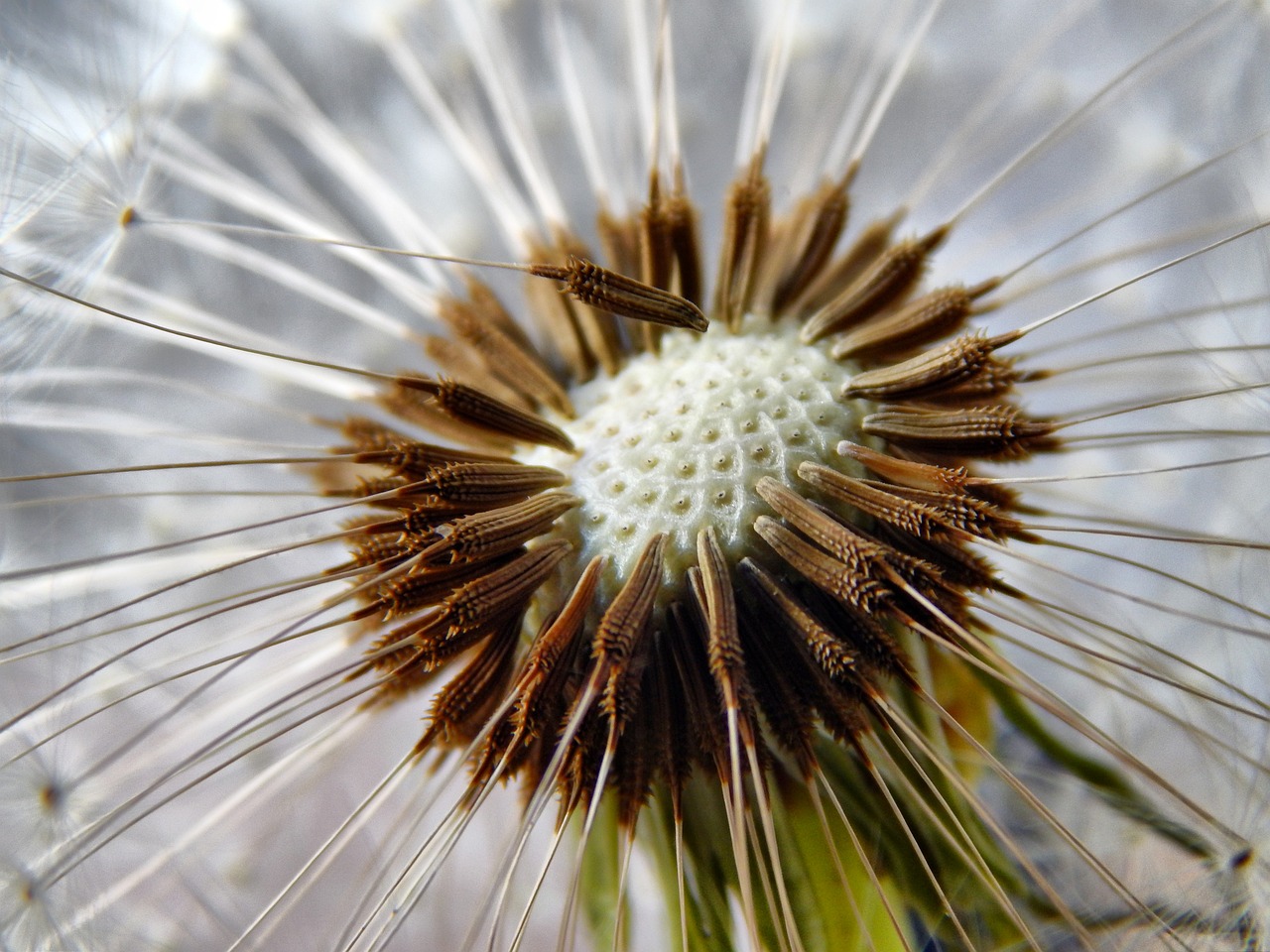
Layering Plants for Depth
When it comes to designing a flower bed that truly captivates the eye, layering plants is a technique that can elevate your garden from ordinary to extraordinary. Imagine walking through your backyard and being greeted by a tapestry of colors and textures that create an enchanting atmosphere. But how do you achieve this? The secret lies in understanding the importance of height, texture, and spacing.
First and foremost, consider the **height** of the plants you choose. By planting taller species at the back of your flower bed and gradually decreasing the height towards the front, you create a natural progression that draws the viewer's eye. This technique not only ensures that every plant is visible but also adds a sense of depth to your garden. For example, you might start with majestic sunflowers or hollyhocks at the rear, followed by medium-height plants like coneflowers, and finish with charming ground covers or low-growing annuals at the front.
Next, let’s talk about **texture**. Mixing plants with different leaf shapes and sizes can create a rich visual experience. Consider pairing the broad, flat leaves of hostas with the delicate, feathery foliage of ferns. This contrast not only adds interest but also enhances the overall health of your flower bed by attracting a variety of pollinators. Additionally, the interplay of textures can make your garden feel more dynamic and lively, as if it’s constantly changing with the seasons.
Spacing is another critical factor in layering. Plants need room to grow, and overcrowding can lead to competition for nutrients and light. Aim for a spacing strategy that allows each plant to thrive. A good rule of thumb is to plant taller varieties about 18-24 inches apart, while shorter plants can be spaced closer together, around 12 inches apart. This not only promotes healthy growth but also ensures that your flower bed looks full and lush without appearing chaotic.
To further illustrate the concept of layering, here’s a simple table that outlines potential plant combinations based on height:
| Height | Plant Suggestions |
|---|---|
| Tall (3-6 ft) | Sunflowers, Delphiniums, Hollyhocks |
| Medium (2-3 ft) | Coneflowers, Black-eyed Susans, Shasta Daisies |
| Short (1-2 ft) | Petunias, Marigolds, Lobelia |
Finally, don’t forget about seasonal changes. As the seasons shift, so too will the appearance of your flower bed. Some plants may bloom early in the spring while others take center stage in the summer or fall. By layering with a mix of perennials and annuals, you can ensure that your garden remains vibrant throughout the year. This not only creates a stunning visual display but also provides continuous interest as different plants come into bloom.
In conclusion, layering plants effectively can transform your flower bed into a stunning masterpiece. By considering height, texture, and spacing, you can create a garden that not only looks beautiful but also thrives in its environment. So, roll up your sleeves, dig in the dirt, and let your creativity flow as you design your layered flower bed!
- What are the best plants for layering? Look for a mix of tall, medium, and short plants that suit your climate and soil type.
- How do I know if my plants are spaced correctly? Ensure that each plant has enough room to grow without overcrowding, typically 12-24 inches apart depending on the species.
- Can I layer plants that bloom at different times? Absolutely! Mixing plants with different blooming periods can keep your garden looking vibrant throughout the seasons.
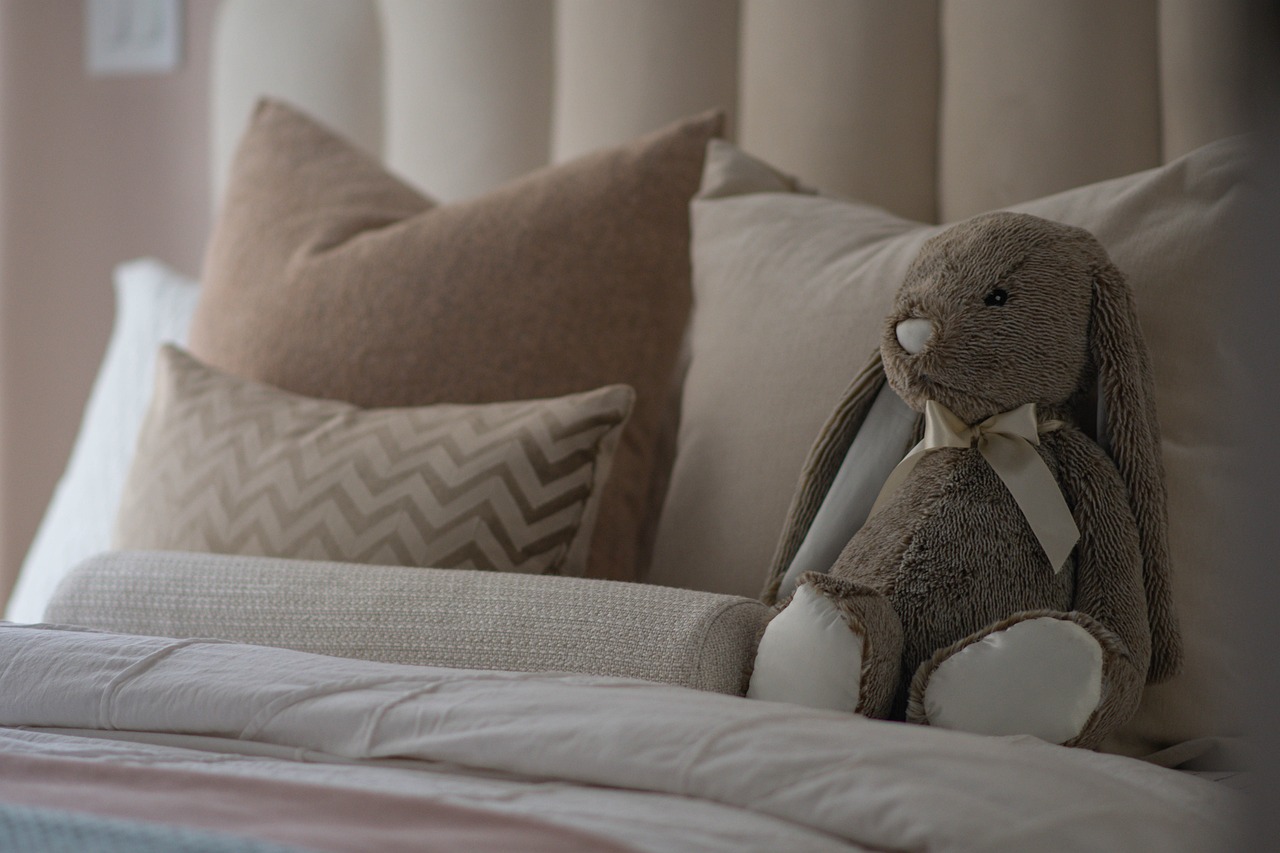
Soil Preparation and Maintenance
When it comes to creating a flourishing flower bed, soil preparation is your secret weapon. Think of your soil as the foundation of a house; without a solid base, everything built on top can crumble. To ensure your flowers thrive, you need to start with high-quality soil. Begin by assessing the current condition of your garden soil. Is it too sandy, clay-heavy, or lacking nutrients? Understanding your soil's unique characteristics will guide you in making the necessary amendments.
One of the first steps in soil preparation is to test your soil quality. This can be done using a simple soil testing kit available at garden centers. These kits will provide you with valuable information regarding the pH level and nutrient content of your soil. Ideally, most flowering plants prefer a pH between 6.0 and 7.0. If your soil is too acidic or alkaline, you can amend it with lime or sulfur, respectively, to bring it to a more suitable level.
Once you have a grasp on your soil's quality, it’s time to start amending it. Adding organic matter, such as compost or well-rotted manure, can significantly enhance soil structure and fertility. This not only improves nutrient availability but also promotes better drainage and aeration. When mixing in organic matter, aim for a ratio of about 25-30% organic material to the existing soil. This will create a rich environment for your flowers to grow and flourish.
Maintaining your soil is just as crucial as preparing it. Regularly adding organic mulch can help retain moisture, suppress weeds, and gradually enrich the soil as it decomposes. You might want to consider using materials like shredded bark, straw, or leaf mold. Not only do these options look great, but they also contribute to a healthier ecosystem in your flower beds.
Moreover, keep an eye on your soil's moisture levels. Overwatering can lead to root rot, while underwatering can stress your plants. It’s essential to find a balance. A simple way to check if your soil needs water is to stick your finger about an inch into the soil. If it feels dry, it’s time to water! Remember, consistent moisture is key to vibrant blooms.
Finally, don’t forget about fertilization techniques. A well-timed application of fertilizer can make a world of difference in your flower bed's performance. Use a balanced fertilizer that contains nitrogen, phosphorus, and potassium, and apply it according to the specific needs of your plants. Typically, a slow-release fertilizer applied in early spring will provide the nutrients your flowers need as they begin to grow.
- How often should I test my soil? It's a good idea to test your soil at least once a year, preferably in the spring before planting.
- Can I use regular garden soil for flower beds? While you can use garden soil, it's best to amend it with organic matter to improve its quality.
- What type of mulch is best for flower beds? Organic mulches like shredded bark, straw, or grass clippings are excellent choices as they enrich the soil as they break down.
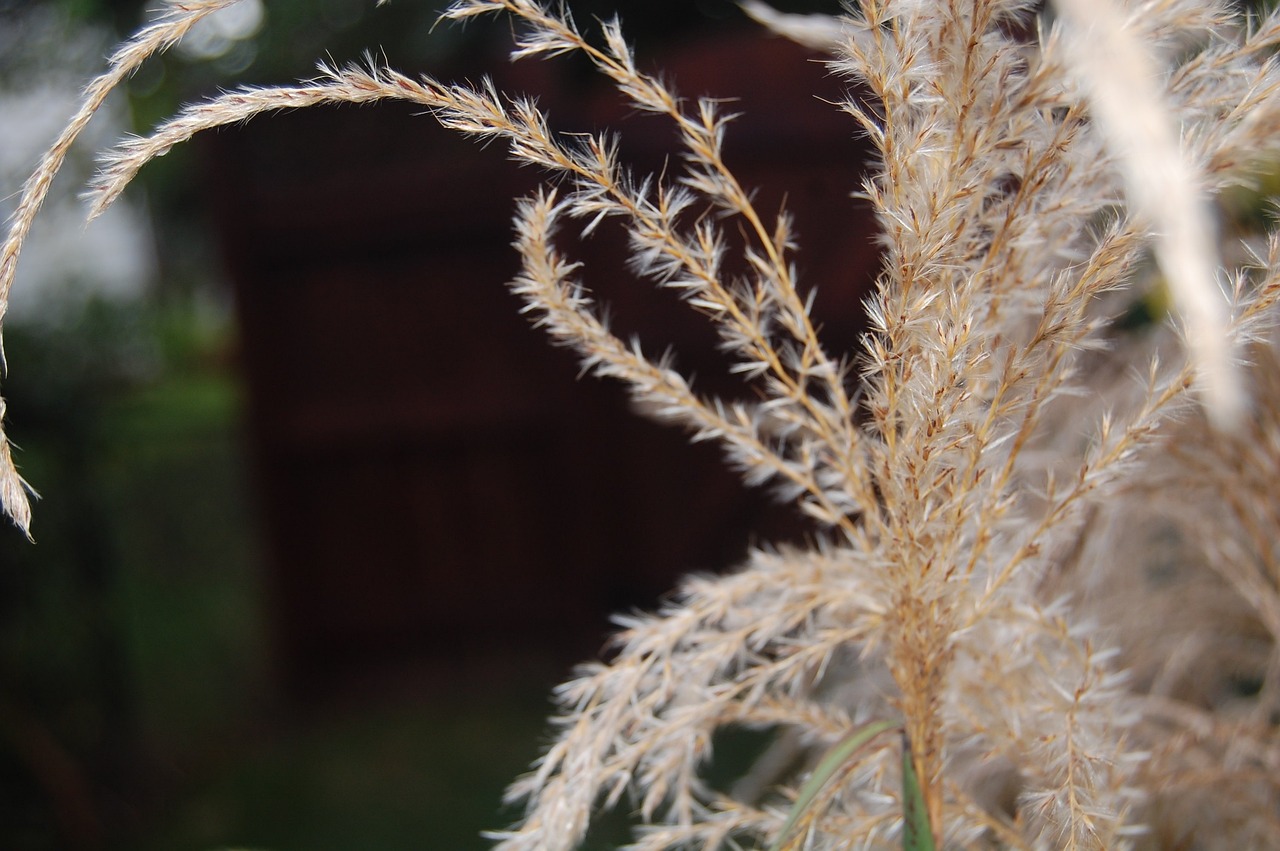
Testing Soil Quality
Before diving into the world of vibrant blooms and lush greenery, it's essential to understand the foundation of your garden: the soil. Testing soil quality is like checking the pulse of your backyard. It reveals crucial information about the pH level, nutrient content, and overall health of your soil, ensuring that your plants get the best possible start. But how do you go about testing your soil? Let’s break it down.
First, you can opt for a simple DIY soil test kit, which you can find at most garden centers or online. These kits typically include everything you need to analyze your soil's pH and nutrient levels. The process usually involves:
- Collecting Soil Samples: Gather soil from various spots in your flower bed to get a representative sample. Aim for about 6-8 inches deep to capture the most relevant data.
- Mixing the Samples: Combine the samples in a clean container to create a uniform mix. This helps in getting an accurate reading.
- Following Instructions: Each kit will have specific instructions on how to conduct the test. Make sure to follow these closely for the best results.
Once you’ve tested your soil, you’ll be able to interpret the results. Typically, soil pH should be between 6.0 and 7.0 for most flowering plants to thrive. If your soil is too acidic (below 6.0), you might see stunted growth or poor flowering. Conversely, if it's too alkaline (above 7.0), nutrient availability can be compromised. Don't worry; there are ways to amend your soil based on these results.
After determining the pH, it's time to look at the nutrient levels. Most soil test kits will provide insights into essential nutrients like nitrogen (N), phosphorus (P), and potassium (K). Here’s a quick overview of what each nutrient does:
| Nutrient | Function |
|---|---|
| Nitrogen (N) | Promotes leafy growth and vibrant green foliage. |
| Phosphorus (P) | Encourages root development and flowering. |
| Potassium (K) | Improves overall plant health and resistance to disease. |
With this knowledge, you can now tailor your soil amendments. For instance, if nitrogen levels are low, consider adding compost or well-rotted manure. If phosphorus is lacking, bone meal can be an excellent addition. Remember, the key to a thriving flower bed is a balanced approach to soil health.
Finally, regular soil testing is highly recommended, ideally once a year, to keep track of any changes and maintain optimal conditions for your plants. Think of it as a routine check-up for your garden. By staying proactive, you can ensure that your flower beds remain a stunning display of nature’s beauty, bursting with color and life!
Q: How often should I test my soil?
A: It's a good idea to test your soil at least once a year, preferably in the spring before planting.
Q: Can I test my soil without a kit?
A: While DIY kits are the most accurate, you can also send samples to a local agricultural extension office for professional testing.
Q: What do I do if my soil is too acidic?
A: You can add lime to your soil to raise the pH level. Be sure to follow the recommendations based on your soil test results.
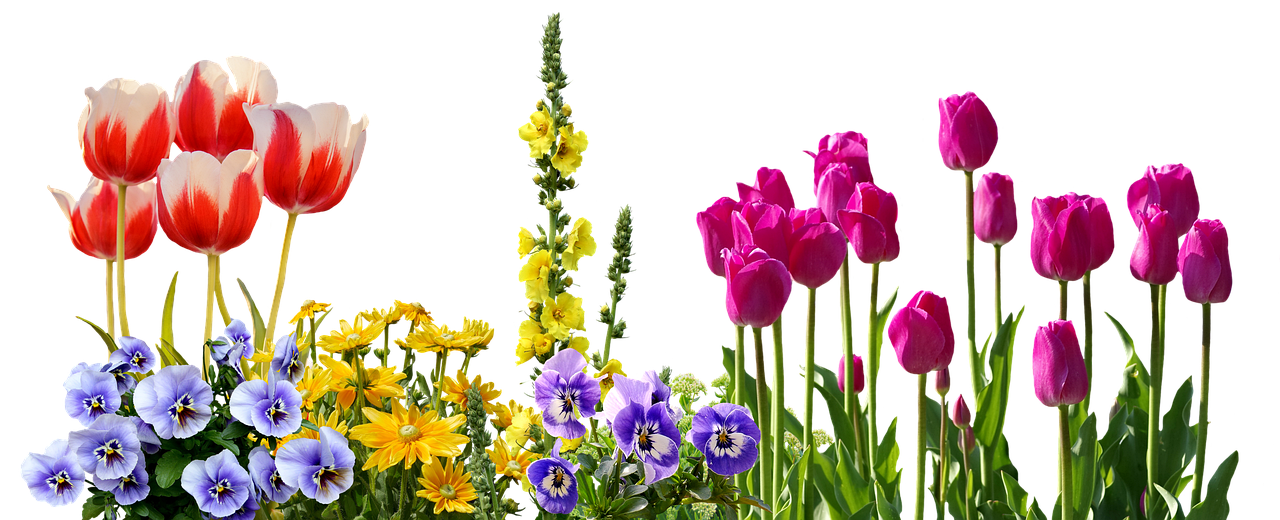
Fertilization Techniques
When it comes to nurturing your flower beds, understanding is like having a secret sauce that can transform your garden from mediocre to magnificent. Just like a chef carefully selects ingredients to create a delicious dish, you too must choose the right fertilizers to boost your plants' health and blooming potential. But where do you start? Let’s dive into some effective fertilization strategies that will have your flowers thriving in no time!
First off, it’s essential to recognize that not all fertilizers are created equal. They come in various forms, including granular, liquid, and organic options. Each type has its own set of benefits and application methods. For example, granular fertilizers are great for long-lasting nourishment. They slowly release nutrients over time, making them ideal for flower beds that require steady feeding. On the other hand, liquid fertilizers can provide a quick nutrient boost, which is perfect for plants that need a little extra help during their growing season.
Now, let’s talk about the importance of timing. Applying fertilizer at the right moment can significantly impact your plants' growth. A good rule of thumb is to fertilize in early spring when plants are just waking up from their winter slumber. This timing allows your flowers to absorb nutrients as they begin their growth cycle. However, you should also consider a second application in mid-summer, especially for annuals that are in full bloom. But remember, over-fertilizing can lead to nutrient burn, so always follow the recommended guidelines on the product label.
To give you a clearer picture, here’s a simple table outlining different types of fertilizers and their best application times:
| Fertilizer Type | Best Application Time | Notes |
|---|---|---|
| Granular | Early Spring | Slow-release; ideal for long-term feeding. |
| Liquid | Spring & Mid-Summer | Quick absorption; great for immediate results. |
| Organic | Early Spring | Natural options; improve soil health over time. |
Another crucial aspect of fertilization is understanding your soil's nutrient needs. Conducting a simple soil test can reveal the pH level and nutrient content of your soil, helping you choose the right fertilizer. Many garden centers offer soil testing kits, or you can send samples to a local extension service for analysis. Armed with this information, you’ll be able to select fertilizers that cater specifically to your soil's deficiencies, ensuring that your flowers receive exactly what they need.
Lastly, let's not forget about the power of organic fertilizers. These are made from natural materials, such as compost or manure, and they not only nourish your plants but also improve soil structure and health over time. They release nutrients slowly, which minimizes the risk of burning your plants, making them a fantastic choice for eco-conscious gardeners. Plus, they contribute to a more sustainable gardening practice!
In conclusion, mastering fertilization techniques is essential for anyone looking to create stunning flower beds. By selecting the right type of fertilizer, applying it at the right time, and understanding your soil's needs, you can ensure that your garden flourishes with vibrant colors and healthy blooms. With a little patience and the right approach, your flower beds will become the envy of the neighborhood!
- How often should I fertilize my flower beds? It’s generally recommended to fertilize in early spring and again in mid-summer, but always check the specific needs of your plants.
- Can I use leftover food scraps as fertilizer? Yes! Composting food scraps can create a nutrient-rich organic fertilizer for your garden.
- What signs indicate my flowers need fertilizer? If your flowers are not blooming as expected, have yellowing leaves, or show stunted growth, they may benefit from fertilization.
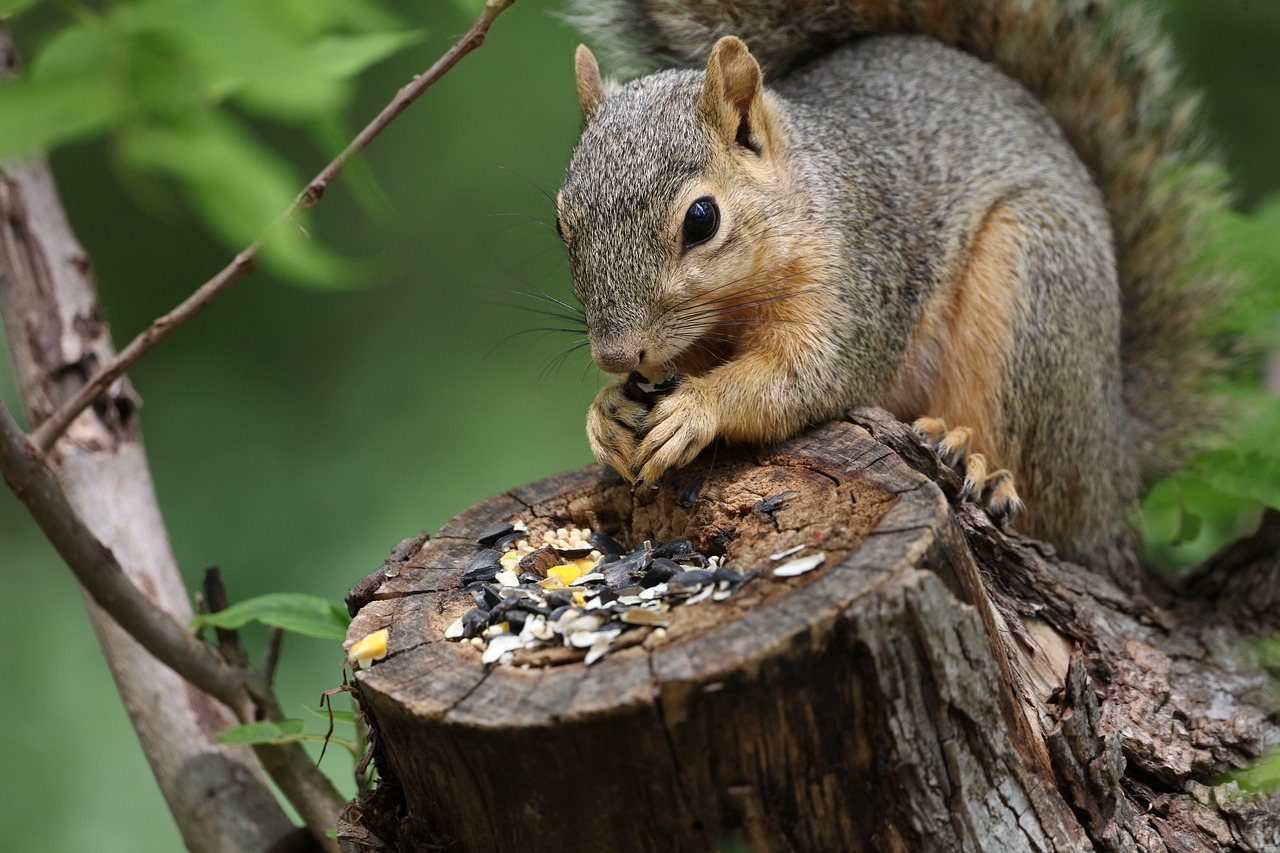
Seasonal Flower Bed Care
Taking care of your flower beds throughout the seasons is vital for maintaining their beauty and ensuring that your plants thrive. Just like any living thing, flowers need different types of care depending on the time of year. Think of your flower beds as a canvas that changes with the seasons, each requiring its own palette of care techniques to keep it vibrant and alive. So, how do you ensure that your flower beds look stunning all year round? Let's break it down, season by season!
In the spring, the awakening of your flower beds begins! This is the time to prepare for growth. Start by removing any debris that has accumulated over the winter months. It's like giving your garden a fresh start! Next, you’ll want to check for any perennials that may have been buried under leaves or mulch. After that, consider adding a layer of compost to enrich the soil. This nutrient boost helps your flowers kick off their growing season with a bang!
As we transition into summer, the focus shifts to maintenance. With the heat kicking in, regular watering becomes essential. Aim for deep watering sessions at least once a week, especially during dry spells. Also, keep an eye out for pesky weeds that can compete with your flowers for nutrients and water. Pull them out as soon as you spot them—think of it as giving your flowers a little breathing room! Additionally, deadheading spent blooms encourages more flowers to bloom, extending the life of your summer display.
When autumn arrives, it's time for preparation for winter. This is often overlooked but is crucial for the health of your flower beds. Start by trimming back any dead or dying foliage. This not only tidies up your garden but also helps prevent diseases. If you have annuals, it’s time to say goodbye as they finish their life cycle. Consider adding a layer of mulch to protect the roots of your perennials from the impending cold. Mulch acts as a blanket, keeping the soil temperature stable and retaining moisture.
Finally, when winter sets in, your flower bed care shifts to protection. While many plants will go dormant, it’s important to keep an eye on the weather. In areas with heavy snow, you might want to protect delicate plants with burlap or frost cloth. This is also a great time to plan for the next year. Take notes on what worked and what didn’t, and start dreaming about new plants to add to your collection. After all, gardening is as much about planning as it is about planting!
In summary, seasonal flower bed care is a dynamic process that requires attention and adaptability. By understanding the unique needs of your flower beds in each season, you can create a stunning outdoor space that flourishes year-round. Remember, your garden is a reflection of your efforts—so get out there and give it the love it deserves!
- How often should I water my flower beds? - Generally, watering once a week is sufficient, but adjust based on weather conditions.
- What is the best time to fertilize my flowers? - Spring and early summer are ideal times to fertilize, as this supports new growth.
- Can I plant flowers in the fall? - Yes, fall is a great time to plant perennials, as they can establish roots before winter.
- How do I protect my flowers from frost? - Use mulch or frost cloth to shield your plants during unexpected cold snaps.
Frequently Asked Questions
- What flowers are best for sunny areas?
When choosing flowers for sunny spots, consider varieties like marigolds, petunias, and zinnias. These blooms love the sun and will thrive, adding vibrant colors to your garden. Always check the specific sunlight needs of each flower to ensure they get the right amount!
- How do I improve my soil for flower beds?
Improving your soil starts with testing its quality. You can use a simple soil test kit to check pH and nutrient levels. Based on the results, you can amend your soil with organic matter like compost or peat moss to enhance its texture and fertility.
- What are some tips for seasonal flower bed care?
Seasonal care is crucial! In spring, focus on planting and fertilizing. During summer, keep an eye on watering and deadheading spent blooms. In fall, clean up debris and consider planting bulbs for spring blooms. Winter is all about protecting your plants—mulch can be your best friend!
- How can I create visual interest in my flower beds?
To create visual interest, think about layering plants of different heights and textures. Use taller plants like sunflowers at the back and shorter ones like pansies in the front. Mixing colors and shapes can also draw the eye and make your garden pop!
- What is the importance of color theory in gardening?
Color theory helps you choose flowers that complement or contrast beautifully, creating stunning visual effects. For instance, pairing yellow flowers with purple can create a vibrant display, while a monochromatic scheme can bring a serene elegance to your garden.



















